Fix: No Wifi Networks Found in Windows 10
Most laptops come with a Wi-Fi (WLAN) card. You can also get a USB Wi-Fi dongle other than an extension card for your standalone PC. The general idea is that your computer is able to scan for available Wi-Fi networks that are within range and list them in the available networks or connect to them if set to do so.
One of the many problems being faced by those who choose to upgrade to Windows 10 is related to Wi-Fi which seems to be broken after the upgrade. Several users have reported that they wireless networks do not show up despite being available on other devices. Other than the PC not being able to identify any wireless network, some users might be able to connect to previous networks, but no new networks are available for connection. Others say that the PC indicates that Wi-Fi networks are available but nothing shows up on the list.
Reasons why your available Wi-Fi network is not visible in your Wi-Fi list
Usually, this issue is related to the WLAN network card drivers. Either the drivers are not compatible, or they are corrupt. Updating to Windows 10 from previous Windows versions e.g. Windows 7, 8 or 8.1 will almost certainly cause a driver incompatibility issue. Drivers from previous Windows versions are not always compatible with the next version of Windows. In both cases of incompatible or corrupt drivers, your WLAN network card is not able to communicate properly with your PC; therefore your PC is unable to identify wireless networks.
Wi-Fi adapters also have a region setting. The primary reason for the this setting is that various world regions have allocated different amounts of frequency space around 2.4GHz for Wi-Fi and so some of them have fewer (or more) channels available than others. The region setting ensures that your router will only let you use the Wi-Fi channels valid in your location and won’t scan beyond those channels. If your Wi-Fi network is on one of the forbidden channels, then it won’t be available. This usually happens to routers transmitting on channel 13.
To resolve this issue we are going to try a few methods that are aimed at getting the correct drivers and channel frequency for your Wi-Fi adapters. However you must first make sure that you are within the radio signal range of your Wi-Fi device and that the network is not hidden. For a good measure, restart your router to ensure that the problem is not originating from the router.
Method 1: Update Wi-Fi adapter drivers
If your problem appeared as soon as you had installed Windows 10, then probably the current drivers are not compatible with Windows 10. You will need to update your drivers. Here is how to do it:
- Press Windows Key + R to open run
- Type devmgmt.msc in the run textbox and hit enter to open the device manager window.
- In Device Manager, go to ‘Network adapters’ and expand that section. You will find the WLAN card drivers here. If you do not see your Wi-Fi network card here, it is probably not installed so you will find it in the ‘Others’ section with a yellow triangle beside it.
- Right click on the device and select, “Update Driver Software”
- Click on “Search automatically for updated driver software” to allow an automatic search. Connect to the internet via Ethernet for better results.
- Let the computer search for the drivers and install them.
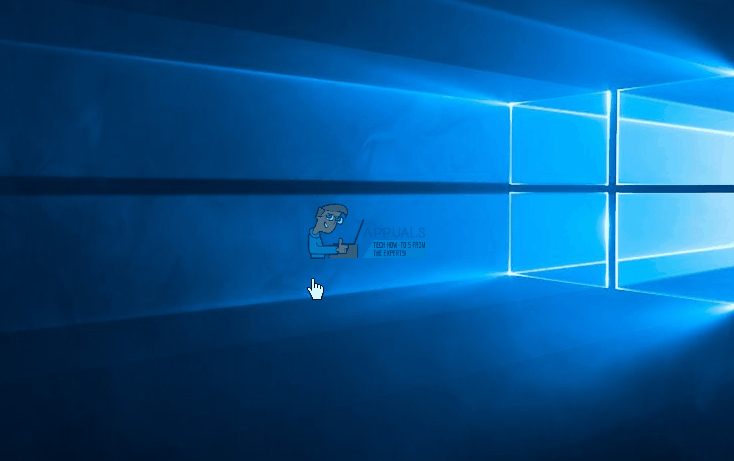
You can also download the latest drivers from your manufacturer’s website.
Method 2: Rollback Wi-Fi adapter drivers
If your previous drivers were working correctly before you updated them, you will need to roll back to the previous drivers.
- Press the Windows logo key + R to open the Run dialog box.
- Type devmgmt.msc in the Run dialog box, then press Enter to open the device manager
- In Device Manager, go to ‘Network adapters’ and expand that section. You will find the WLAN card drivers here. Right click on your WLAN card device and then click Roll back drivers or from Properties go to Driver and choose Rollback Driver.
- Allow the roll back. This will take you back to the previous drivers that functioned fully.
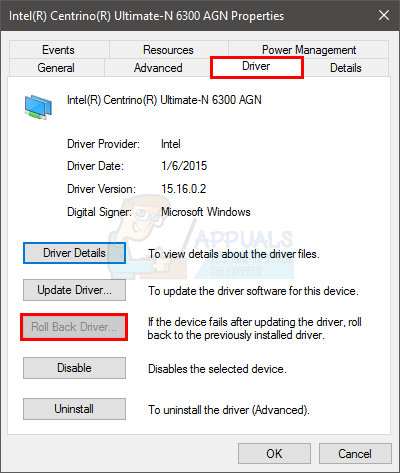
Method 3: Uninstall your current Wi-Fi adapters and restart your PC
This method will clear bad or corrupt drivers and reinstall the right drivers.
Step 1: Uninstall drivers
- Press the Windows logo key + R to open the Run dialog box.
- Type devmgmt.msc in the Run dialog box, then press Enter to open the device manager
- In Device Manager, go to ‘Network adapters’ and expand that section. You will find the WLAN card drivers here. Right click on your WLAN card device and then click Uninstall.
- Allow the uninstallation. This will clear the corrupt or incompatible drivers.
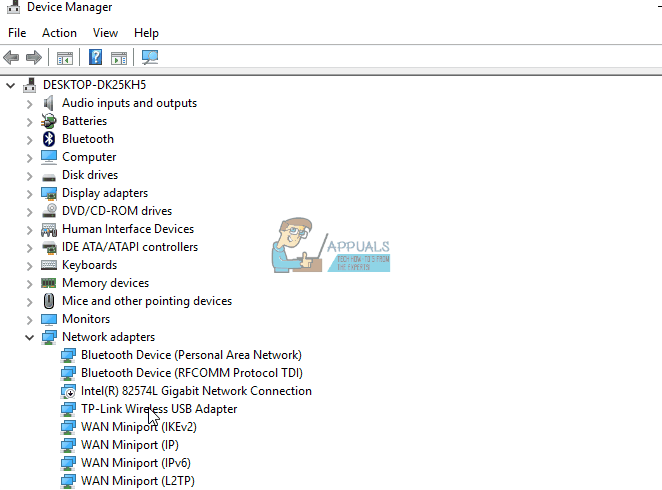
Step 2: Option 1
- Restart your PC. Restarting your PC is likely going to pick up the hardware changes and install the correct drivers the next time you PC boots.
Step 2: Option 2
- If restarting your PC doesn’t work, we will have to reinstall the correct drivers manually. To do this, click on ‘action’ on your device manager window and choose ‘Scan for hardware changes.’
- This will find the uninstalled driver and install it.
- If scanning for hardware changes doesn’t reinstall your device, we will have to find them manually. From the device manager window, click View and select show hidden devices (unless it already has a tick on the left). If you still don’t see your device, click on Action then select scan for hardware changes.
- Your Wi-Fi adapter device is likely to be listed under ‘Other Devices’ (usually lists uninstalled devices) with a yellow triangle on it.
- Right click on the device and select, “Update Driver Software”
- Click on “Search automatically for updated driver software” to allow an automatic search
- Let the computer search for the drivers and install them.
- Restart your PC
Step 2: Option 3
- You can run the hardware troubleshooter to install your Wi-Fi device drivers. Press the Windows logo key + R to open the Run dialog box.
- Type control in the Run dialog box, then press Enter.
- In the Search box in Control Panel, type troubleshooter, and then click Troubleshooting.
- Under the Hardware and Sound item, click Configure a device. If you are prompted to enter an administrator password or provide confirmation, type the password or provide confirmation.
- Press Next and let the troubleshooter scan for problems. Fix all emerging problems. This will install the missing Wi-Fi adapter drivers.
- You may have to restart your PC.
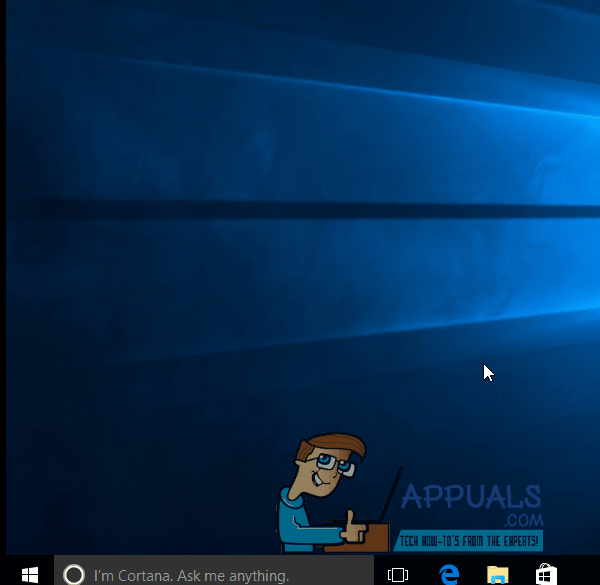
Method 4: Disable conflicting Wi-Fi network adapters
If the first Network adaptor driver fails to properly install, Windows will not start the WLAN service and even though the subsequent Wireless network adaptor drivers install and go through fine, the available networks are not visible to the system. Check if there is any failed Wireless network adaptor and disable it in order to avoid conflict with the actual drivers. Follow the steps below:
- Press Windows Key + R to open run
- Type devmgmt.msc and hit enter to open the device manager
- Go to the ‘Network adapters’ section and check if there are any unknown devices or network controller with a yellow exclamation. Also check in the ‘Other devices’ section that hosts unidentified/unknown devices.
- Right click and select properties.
- Select driver tab and hit disable.
- Apply changes.
- Back to Device manager and expand Network Adaptors.
- Right click on the wireless driver and select uninstall.
- Apply changes and hit OK.
- Restart the computer which will load the generic drivers for your Wi-FI devices.
Method 5: Change the adapter region
Your Wi-Fi adapter region setting must match that of your Wi-Fi router otherwise your computer won’t be able to find your network. To change the region:
- Press Windows key + R to open Run
- Type devmgmt.msc and hit enter to open device manager
- Go to ‘Network Adapters’ section and expand it
- Right click on your Wi-Fi adapter and select properties
- Go to the advanced tab and find the ‘Country and Region’ property. Set the value according to your region or according to the channels e.g. (1-11 or 1-13). Try a different combination, some wifi routers do not support 5 GHz.
- Not all Wi-Fi adapters have this property. For some, you can find it in the ‘Channels Number’ property or its equivalent.
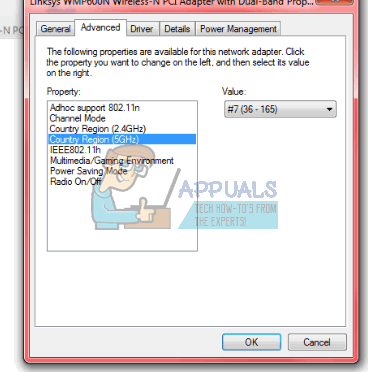
You can also change your Wi-Fi router channels from it WLAN advanced settings to match your adapter settings.